In an era where practicality, health, and sustainability are at the forefront of our minds, the fat tire electric bike has emerged as an exhilarating solution to all three. Besides being an eco-friendly alternative to traditional vehicles, these bikes offer a unique blend of adventure, fitness, and versatility. They can transform ordinary rides into thrilling escapades across a wide spectrum of terrains, and in any season, all while helping to maintain one’s physical health. The standout features of fat tire electric bikes open up a world of opportunities and advantages, making them an exciting choice for biking enthusiasts and hobbyists alike.
Riding for all seasons
Winter might be the season generally favored by skiers and snowboarders, but it’s also a great time for biking enthusiasts to enjoy their beloved hobby. Sure, it’s a bit colder and a bit snowier, but winter cycling can provide a unique and exhilarating experience. If you’re ready to embrace the chill and venture into something a little different, here are some things to consider about biking in the colder months.
Biking in winter, like any other outdoor activity, requires proper gear. Invest in insulated cycling clothes, winter gloves, and thermal socks. Don’t forget the essential head gear and face mask. They’ll shield you from the wind and keep you warm. Opt for bright or reflective gear to make sure you’re visible during those shorter days and longer nights.
Layering is key. It’s better to have removable layers than to wind up stuck in gear that’s too warm once you’ve gotten going. Start with moisture-wicking base layers, add insulating layers, and top it off with a waterproof and windproof shell.
Remember, your bicycle will need some winterizing too. Standard tires might not perform well on icy or snowy roads. Consider switching to studded tires for better traction. Regularly lubricate your bike chain to prevent rust from the harsh winter conditions.
Riding in the winter can be more challenging than during other seasons. Practicing bike handling skills is a must. Get comfortable with riding in snow and ice. Yes, this might mean taking some minor spills in the beginning, but confidence and ability will build over time.
Expect your average speed to be slower than usual. Don’t worry about pace or distance. Instead, focus on the time spent riding. Winter cycling is more about embracing a new environment than setting personal records.
Lasty, ensure you stay hydrated and fueled. Just because it’s not sweltering hot doesn’t mean you won’t sweat or burn calories. Carrying snacks and a thermos of hot drink could make the experience all the more pleasant.
Biking in the winter is all about being prepared and understanding that it’s a different kind of ride – slower, more challenging, but also incredibly rewarding. You’ll get to see your favorite trails and routes in a new, beautifully frosty light. Most importantly, you’ll get to keep doing what you love, which is spending time on your bike, despite the dipping temperatures!

Explore more terrain
Navigating the difficult paths of wilderness during winter does require some serious homework. Here are some more crucial pointers every winter cyclist should remember before heading out on a frosty adventure.
Understanding the Terrain:
A basic understanding of the type of terrain you’ll be riding on can profoundly impact your winter cycling experience. Various terrains call for different bike setups and riding strategies. For instance, icy terrain requires studded tires for better grip, while packed snow might be handled well enough with regular mountain bike tires.
Trail etiquette during winter:
Avalanche risks, frozen trails, sensitive vegetation under the snow – all these aspects require a different kind of attention in winter. Doing a little research about local guidelines or talking with experienced local cyclists can help in understanding what is acceptable and what isn’t.
Pre-Ride Inspection:
Performing a thorough bike inspection is essential before any ride, even more so in winter. Check that the brakes function correctly, ensure the chains are well lubricated, and the lights are bright enough. Also, see that the tires are inflated for the conditions you’ll be riding into.
Emergency Preparedness:
Always have a basic repair kit handy. Include essentials like a multi-tool, patch kit, pump, and spare tubes. And with winter’s unpredictable weather, it’s always wise to carry emergency supplies such as thermal blankets, additional high-energy snacks, and a compact shovel, if possible.
Warming up and Cooling down:
Warm-up exercises prepare your body for the rigorous physical activity ahead, especially in cold weather, reducing the risk of injuries. Post-cycling, a cool-down session can promote faster recovery and reduce muscle stiffness.
Weather Check:
Always keep a tab on the weather forecast for the area where you’ll be cycling. Though it’s thrilling to ride in a snowfall, sudden changes in weather can turn a fun ride into a dangerous situation rapidly.
Learning to fall:
Falling is inevitable when you’re cycling on unpredictable winter terrain. Thus, learning how to fall ‘correctly’ can help avoid injuries. While it may sound counterintuitive, remember that it’s better to go with the fall’s momentum instead of fighting against it.
Seeking out company:
Naturally, cycling in a group or with a partner can prevail over lone cycling. Not only does it provide safety, but others can lend a hand during a technical malfunction or an unfortunate fall.
Knowledge is power, and arming yourself with these winter cycling tips will undoubtedly aid you on your icy adventures. Now, even the trickiest terrains would seem less daunting as the pedals get cranking. After all, winter cycling, like any sport or hobby, is all about respect for nature, preparedness, and the thrill of beating the odds with a smile. So, gear up, ride safe, and let your winter cycling saga begin!
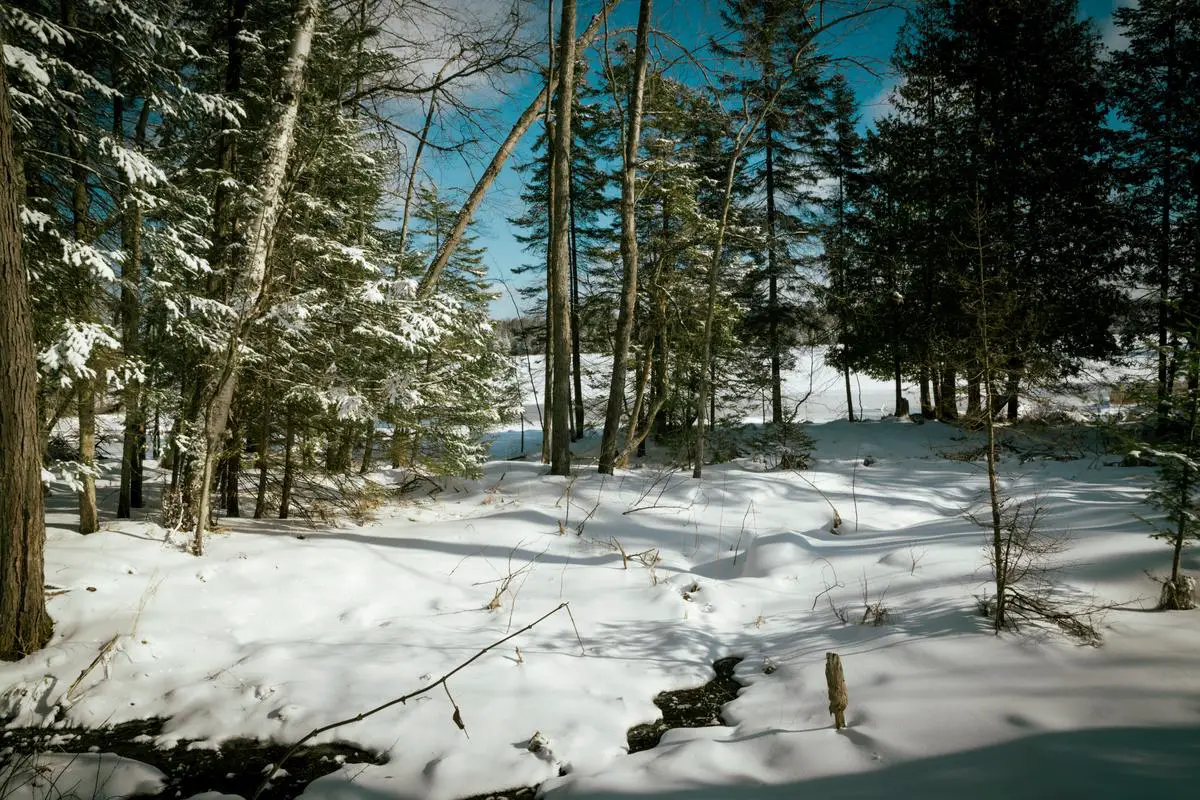
Health and Fitness
Understanding Your Terrain: Winter conditions can change your regular trails drastically. Frozen ground offers a hard-packed, fast surface; snow can range from a fun challenge to a frustrating slog depending on how deep and fresh it is. Will you be dealing with hardpack, ice, or slop? Knowing beforehand will help you prepare. Remember, conditions can change mid-ride, so stay adaptable.
Trail Etiquette: Preserving trails is avidly practiced within the cycling community, and winter is no exception. When the ground is frozen and the trails are snowy, cycling does little damage. However, when temperatures rise and the snow melts, it can lead to trail erosion. As a responsible cyclist, it’s best to stick to icy or properly frozen trails.
Pre-Ride Bike Check: Check your bike before setting out, paying special attention to the brake pads and tire pressures for winter conditions. Cables should be in good working order and the tires should have the right amount of pressure to provide optimum grip. In harsh weather conditions, the smallest mechanical issue can turn into a big problem quickly.
Emergency Preparedness: Winter cycling may leave you in isolated areas with fewer people around, so be prepared for emergencies. Carry a repair kit and make sure you’re skilled in fixing common issues like a flat tire. Bring extra food, water, clothes, a flashlight, and a cellphone. Know the symptoms of hypothermia and frostbite.
Proper Warm-ups and Cool-downs: Begin your ride with a warm-up to prepare your body for the activity, and end with a cool-down to ease out of it. Both should last at least 10 minutes to protect your muscles from injury.
Weather Checks: Check the weather forecast before you head out. With winter’s unpredictable weather patterns, it’s best to know what conditions you’ll be facing. If the forecast calls for heavy snow or freezing temperatures, skip the ride.
Learning To Fall: Every cyclist, especially the winter adventurer, should know how to fall right. Aim to tuck in and roll, avoiding any attempt to break your fall with your hands as this can lead to wrist injuries. Falling in snow can be a lot less painful, but icy patches can present danger.
Company: Riding with other people is both more fun and safer. A fellow cyclist can provide aid in case of an accident, help keep you motivated, and make the whole experience more enjoyable. Plus they can insist on a post-ride hot chocolate, and who could say no to that?
Winter cycling is not just another way to stay fit, it’s an experience unto itself. Embrace the slipping, the sliding, the challenge, and above all else, the beauty. The white, wintery landscapes provide a positive shift in perception, renewing passion for a hobby enjoyed year-round. Everything feels a little bit more alive in winter, including you. So, layer up, warm up, and pedal on.
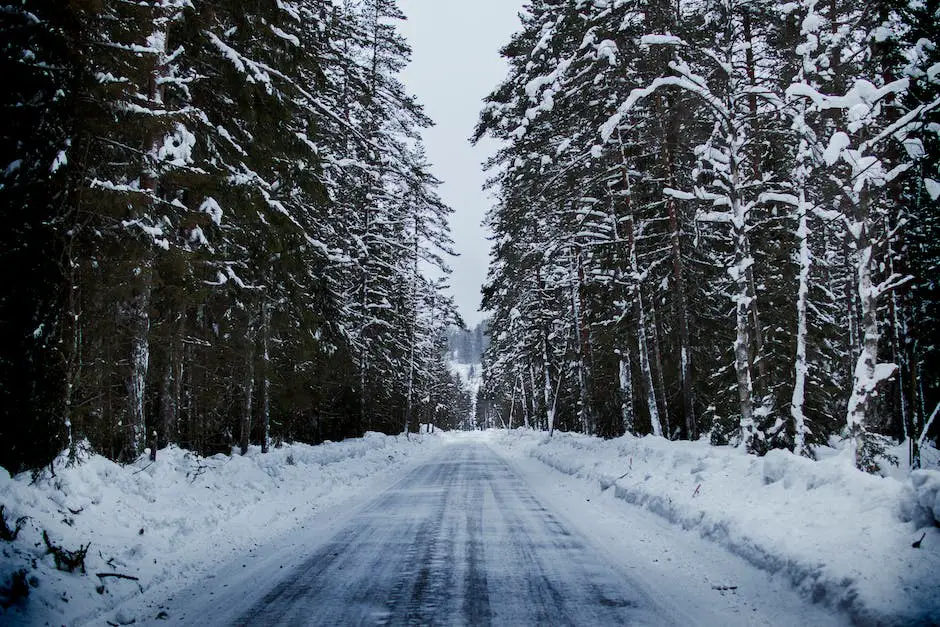
Environmentally-friendly
Navigating Night Riding in Snowy Conditions
When it comes to winter cycling, don’t hesitate to embrace the dark! It allows for a unique and invigorating experience, especially with the right equipment. Having a set of high-quality lights is key for both visibility and safety. A bright and reliable front light is important for illuminating your path and alerting oncoming cyclists or motorists, while rear light alerts those approaching you from behind. Reflective strips on clothing, your helmet, and even on the bike itself also improve visibility tremendously, especially in snowy weather when visibility reduces.
Cold Air, Warm Lungs
In chilling winter, it’s crucial to protect your lungs. Breathing in cold air can constrict the airways, causing discomfort. Therefore, a neck gaiter or balaclava comes in handy, not only for warmth but also for breathing in warmer air. With evolving innovations, there are even some brands out there that have incorporated materials specifically designed to warm inhaled air and protect the face.
Brakes: Your Best Friend
Stellar braking technique is a must when it comes to winter cycling. Stopping might take longer on snowy streets, so it’s essential to start braking earlier than you think you’ll need to. Different conditions ask for different techniques, for example, when the roads are icy, it’s beneficial to use more rear brake to avoid losing control.
Knowing Your Limits
Winter cycling is all about self-awareness. It’s important to understand your stamina, strength, and endurance capabilities before hopping on the bicycle. It’s perfectly okay to take frequent breaks or to choose not to ride at all in stormy weather. Remember, safety always comes first.
Ride Local
The winter season is a perfect time to be a tourist in your own town. Explore local parks and trails that you usually pass by when taking the usual route. It is also safer as well, since riding in known areas reduces the chances of getting lost or being far from help in case of an emergency.
Post-Ride Care
Perhaps as important as the ride itself is the post-ride care one should take in winter. Wipe down the bike soon after the ride; it helps to prevent rust and damage from salt and water. Bring the bike indoors to help thaw frozen parts and provide a thorough clean when needed.
And there you have it. Winter cycling requires a shift in perspective and a little extra preparation. With these tips tucked under your helmet, you’re ready to embark on an exciting and eco-friendly ride amidst the tranquillity that winter brings.
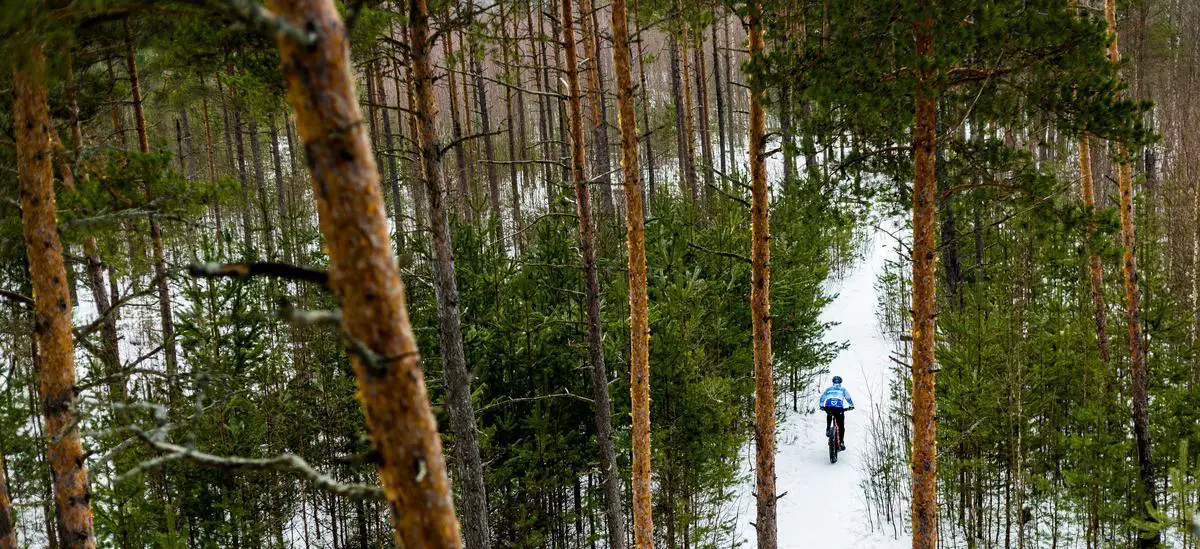
Photo by kaurmartin on Unsplash
Adventurous Commuting
Enjoying winter cycling means more than just tolerance to the cold weather. It requires focusing on the myriad nuances that can enhance your safety, comfort, and overall experience. So, here are some helpful tips to take your winter cycling to another level.
Master the Art of Body Regeneration. Winter cycling can be punishing to the body—especially if you’re not paying attention to post-ride recovery. Remember to replenish your energy with nutritious food and ample rest. Apply post-ride massage or stretches to prevent painful muscle cramps and stiffness.
Explore Ice-Tyre Technology. Winter cycling offers the perfect opportunity to explore stud-tipped ice-tyres. They offer tremendous control and stability on icy terrains, serving as your trusty companions through those frosty, beautiful landscapes.
Guard Your Extremities. While layering has been covered, special note should be made for your fingers and toes. Insulated cycling gloves and woolen socks can offer the much-needed warmth and comfort your hands and feet require in freezing temperatures.
Add a Salting Plan. Just as your local road services salt the roads, consider a light salting of your own bike frame. This can help mitigate the corrosion from ice and slush. Remember, however, that too much salt can lead to rust so use this sparingly and always thoroughly clean your bike after a snowy ride.
Develop a Wind Strategy. Wind poses a major challenge during winter rides. Studying wind patterns and planning your ride to avoid fierce headwinds can make your experience more enjoyable and less exhausting.
Give Special Care to Your Battery. If you’re into e-bikes, winter cold can drain the battery faster than usual. Keeping your batteries warm and fully charged before setting off can ensure maximum mileage.
Invest in a Reliable Bike Maintenance Kit. The harsh winter conditions make minor breakdowns more likely. Having a reliable bike maintenance kit with essentials like multi-tools, tyre lever, spare tubes, patch kit, and a portable pump can be a lifesaver when you’re out in the middle of nowhere.
Remember, winter cycling is about more than just battling the cold—it’s about embracing an invigorating, tranquil and somewhat challenging form of cycling. Safety and preparedness can transform this potential challenge into the most rewarding part of your day. Not to mention, it’s a great way to avoid traffic and ordinary routines.
There’s a whole winter wonderland out there. All it takes is a bit of knowledge, proper equipment, and a can-do spirit to explore it. So, bundle up and pedal on.
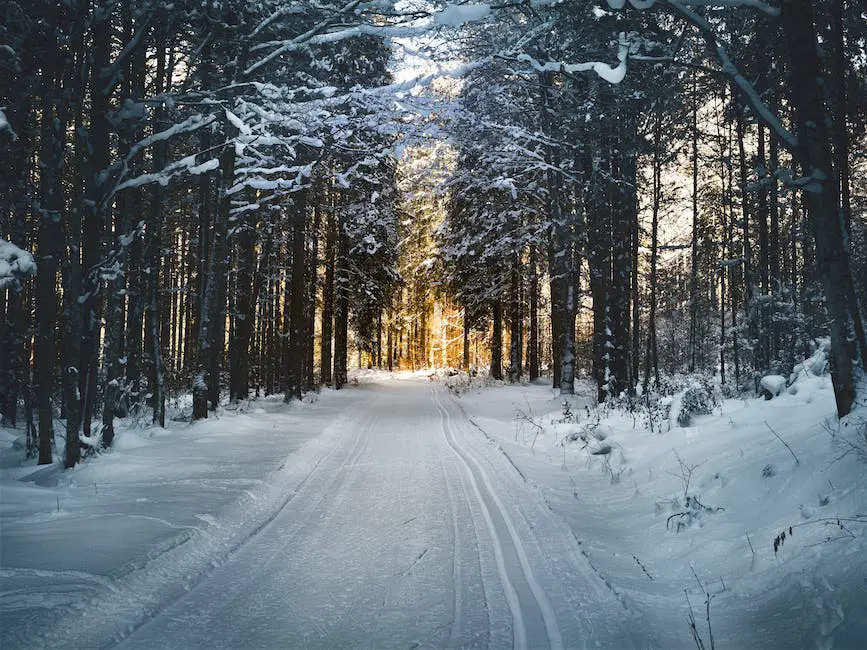
Longer Rides
Maintaining a Consistent Riding Schedule:
Just like any exercise regimen, consistency in cycling improves stamina, builds muscle strength, and helps to condition the body for long biking trips under the harsh winter conditions. Sticking to a regular schedule can not only increase endurance but also foster greater adaptation to winter climates for those splendid long cycling escapades.
Balancing Fitness with Rest and Recovery Days:
Embarking on long biking trips can be strenuous, so it’s key to balance active days with periods of rest. Doing so allows the body to repair and recover, ultimately enhancing overall cycling performance. This concept is not limited to the non-winter months, but is equally, perhaps more, relevant to winter cycling.
Variable Training for Superior Endurance:
To build greater endurance for long biking trips, cyclists should incorporate variable training methods into their preparation. This could include interval training, cross-training, and strength training routines, all designed to increase physical resilience and improve adaptive capabilities for varying winter conditions.
Optimizing Nutrition to Boost Performance:
Alongside physical training, good nutrition is of prime importance for enhancing performance. Focusing on a balanced diet rich in carbohydrates, proteins, and healthy fats will fuel the body for those long trips. Paired with adequate hydration, the cyclist will be prepped and ready for the long-haul.
Trialing Extended Biking Routes:
Before setting off on long biking trips in winter, it’s practical to trial extended routes close to home. This builds mental and physical readiness while evaluating fitness levels and understanding how the body copes with longer distances in colder temperatures.
Formulating a Robust Biking Strategy:
Planning the route, understanding the frost patterns, knowing when to pace slow or fast, and determining the right time to take breaks for hydration and food intake are all essential steps toward successful long-distance winter cycling. Failing to have a strategy can result in fatigue, over-exhaustion, and even hypothermia.
Using the Right Bike for Long Trips:
Long-distance cycling demands the right kind of bike, equipped for the demands of winter weather. Opt for a bike with sturdy construction, reliable suspension, and larger tires that can handle snowy and icy conditions. Choosing the right bike will offer the durability needed for successful long rides.
Embrace the exhilaration of winter cycling. The frosty landscapes, the chilly air, the solitude – there’s indeed something magical and remarkably rewarding about biking in winter. With the right approach and preparation, you can embark on those dreamt long biking trips without worrying about exhausting yourself. Take the ride and enjoy the journey. It’s truly a remarkable pedal-powered winter adventure!
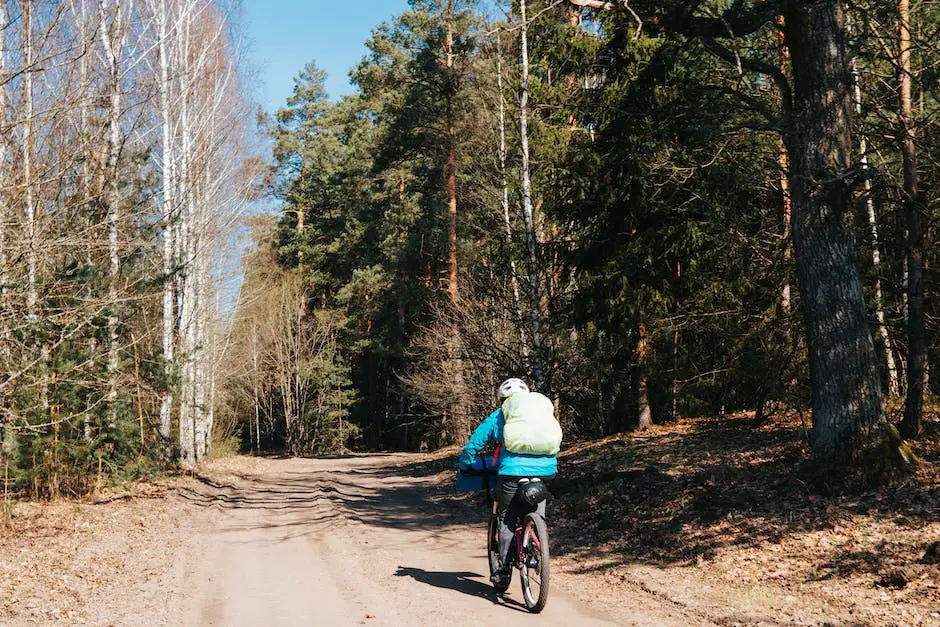
The numerous benefits offered by fat tire electric bikes underline their steadily growing popularity amongst a variety of cyclists. These bikes are not only a key to enjoying all-season biking and exploring varied landscapes, but they also work wonders for boosting fitness, promoting sustainable travel, and rejuvenating everyday commutes. With their potential for longer rides, even those who are new to biking or are resuming after a break can find them inviting and empowering. In many ways, fat tire electric bikes are more than just a mode of transportation – they represent a lifestyle brimming with adventure, health, and ecological mindfulness.

